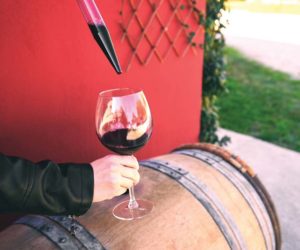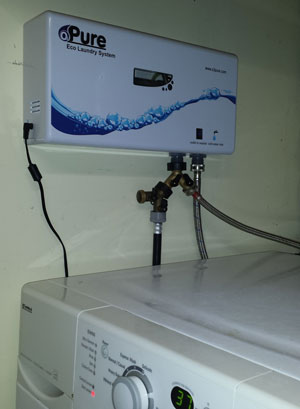
Dear Wine Wizard,
I am planning to brew my first mead this weekend. I will be using a recipe that calls for “yeast extract,” which I take to be the same as products I’ve seen called “yeast hulls” and “yeast nutrient.” Are they all the same?
Also, how worried should I be about my champagne yeast taking off in honey? I asked my buddy what he thought; he suggested a good shaking for aeration. If I do that and it doesn’t take off, can I add nutrients a few days later without fear of contamination?
Bryce Eddings
Cape Girardeau, Missouri
Wine Wizard replies: Have no fear of the Champagne yeast failing to take off in your honey. As long as you dilute the honey accordingly, you’ll have a sugar solution that the yeast should happily ferment to dryness (in other words, minimum residual sugar) — or to whatever point at which you want to arrest fermentation with cold temperatures or sulfite additions.
It ‘s always a good idea to add yeast extract, nutrient or hulls to a honey fermentation because honey lacks many of the essential nutrients that yeast need to survive. Though they serve a similar purpose, the above additives are not one and the same.
Yeast hulls (sometimes called “yeast ghosts”) are essentially yeast skeletons. They’re the freeze-dried empty shells of yeast cells that have had the water and other liquid elements sucked out of them. Sounds a little gruesome, but yeast hulls provide extra nutrients that are critical to a fermentation.
Yeast extract, on the other hand, is basically a concentrated slurry of dead yeast cells. It’s sold dehydrated or wet. This slurry is rich in vitamins, minerals, nitrogen and other elements, some of which yeast can use and some that they’ll simply excrete un-metabolized.
It ‘s always a good idea to add yeast extract, nutrient or hulls to a honey fermentation because honey lacks many of the essential nutrients that yeast need to survive.
Yeast nutrient (sometimes called “yeast food”) is a scientific, laboratory-formulated mix of good stuff (nitrogen, amino acids, certain proteins and minerals) that yeast need and actively metabolize in fermentation conditions. Yeast nutrient is the most expensive additive of the three and a little bit goes a long way.
It’s up to each individual winemaker to decide which additives, if any, they choose to introduce into a fermentation. Mead and other fruit beverages, which may lack the proper balance of nutrients for a maximized fermentation, are classic cases where yeast nutrients, yeast hulls and yeast extract have been successfully used.
Dear Wine Wizard,
I have been an amateur home winemaker for the past three years and use elderberries in most of the wine I make. My question is: What changes the color to blue when water is used to clean containers that held the juice of the elderberries? I am sure it must be a type of acid, but would like to know what it’s name is. I will be waiting for your answer; I have asked many people and they can’t give me an answer.
Morgan Donahue
via e-mail
Wine Wizard replies: You’re right in assuming that it has something to do with acidity, but the answer you’re looking for is not exactly the presence of an acid but rather the absence of one. Fruit juices exist in the acidic realm of chemistry. They have a hydrogen ion content high enough to make the concentration of acid greater than that of water.
Quick chemistry lesson: If something is acidic it is said to have a low pH and if something is not at all acidic (“basic”) it has a high pH. I know that sounds backwards, but play along. The middle point that all pH values rotate around is the pH of water, which is entirely neutral and measures a 7 on the pH scale. The pH scale ranges from 0 to 14. Acids have pH lower than 7 and bases (things like bleach or baking soda) have a pH higher than 7, with14 being the most basic something can get.
Wines typically measure around 3.5 on the pH scale. The terms are relative, however. A wine of pH 3.9 is said to be more “basic” than a wine of pH 3.2, even though both wines are technically classified as “acidic” because they have a pH of less than 7.
How does this relate to your elderberry juice turning blue if you add a lot of water to it? As the organic chemistry gods would have it, the red pigments of things like grapes, strawberries, elderberries and other fruits remain red only if they are found in an acidic environment. Luckily for those fruit pigments, they typically are hanging out in an acidic fruity, juicy environment (like wine) that lets them maintain their redness. If you shift the pH of the pigment’s environment to make it less acidic (therefore more basic), they change their chemical structure to reflect light in the blue-green spectrum instead of the usual red-purple spectrum.
By diluting the elderberry stains with a large amount of water and making the environment much more basic, you’re crossing over the color-switch point and are causing the pigments to be blue rather than red. The pH scale is an exponential function, and pH 7 (the pH of the water) is much more “basic” than pH 3.5, even if pH 7 is officially what we call “neutral.”
Got a question? E-mail [email protected]. The Wiz will select several questions to answer in each issue, but can’t reply to each letter personally.






